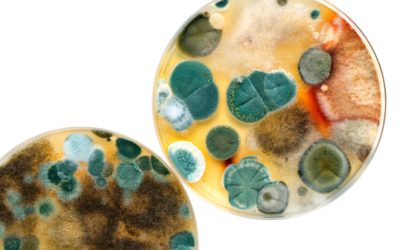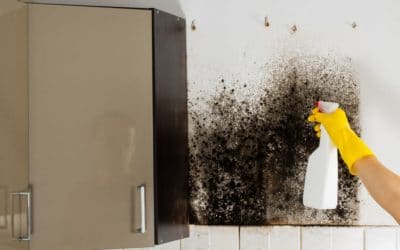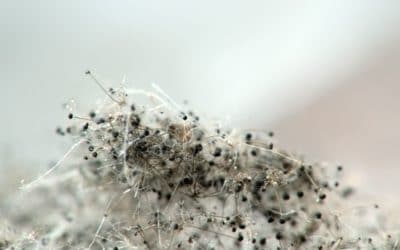How to Prevent Mold: The Ultimate Guide
Mold is a serious issue that can cause a lot of damage to your home. In this guide, we will discuss the different ways that you can prevent mold from growing in your home. We will also provide some tips on how to get rid of mold if it does start to grow.
1. What is mold and why is it a problem
Mold is a type of fungus that grows in warm and moist environments. It gets its nutrients from dead or decaying matter and can often be found growing on visibly dirty or rotting surfaces, such as walls, floors, and furniture. Although mold is generally harmless in small amounts, it can pose serious health risks when it starts to grow out of control. In large quantities, mold can cause allergies, respiratory problems, and even headaches or dizziness. Furthermore, mold can easily spread from one surface to another if not properly cleaned up or treated. For these reasons, it is important to take steps to minimize the risk of exposure to mold and prevent its growth in your home or workplace. This might include regular cleaning and disinfection practices as well as keeping indoor humidity levels below 60%, since high humidity can create favorable conditions for mold growth. With proper care and attention, you can keep yourself safe from the dangers of mold by preventing its growth and limiting your exposure to it whenever possible.
2. How to identify mold
When it comes to mold, identification is key. This is because different types of mold can have very different effects, ranging from mild irritation to major health problems. One of the easiest ways to identify mold is by looking for signs of visible growth and discoloration on a surface. Mold usually appears as a fuzzy or powdery substance that typically has a greenish-black, gray, yellowish-white, or even pinkish hue. There may also be a strong musty odor associated with the mold. In addition, if you notice any health symptoms that could potentially be attributed to mold exposure such as coughing, sneezing, skin irritation, or difficulty breathing, you should consult a doctor immediately for further testing and treatment if necessary. With these simple tips in mind, you can stay informed about any potential mold issues in your home or workplace and take the appropriate action to protect your health and well-being.

3. The dangers of mold exposure
Mold is a common household hazard that can have serious consequences if left untreated. While some types of mold are relatively harmless, others can cause an array of adverse health effects, including respiratory problems, skin irritation, and neurological damage. What’s more, exposure to many types of mold can trigger allergic reactions or asthma attacks in sensitive individuals. Therefore, it is critical to always practice safety precautions when dealing with mold. This might mean wearing protective gear like gloves and face masks when cleaning up after a mold infestation, as well as avoiding areas that are likely to harbor growths of toxic molds. By taking proper steps to minimize your risk of exposure to these dangerous organisms, you can help to protect yourself from the negative impacts of mold exposure.
4. How to prevent mold from growing in your home
There are several simple steps you can take to prevent mold from growing in your home. First, it is important to regularly inspect the places in your home where mold often forms, such as bathroom and kitchen walls and around windows. If you notice any suspicious discoloration or growth, be sure to clean these areas with soap and water or a commercial cleaner. Another good strategy for preventing mold is to keep your home well ventilated at all times. This means cracking open windows during the day so that fresh air can circulate throughout the house, and leaving exhaust fans on after showering or cooking. Finally, another key factor in controlling mold is to eliminate excess amounts of moisture. For example, you can use a dehumidifier or dry towels outside rather than leaving them inside to avoid creating damp conditions that promote fungus growth. By following these simple tips, you can help prevent invisible spores from ruining the comfort and safety of your home.
5. Tips for cleaning up mold damage
Few things are as unsightly–and as potentially dangerous–as mold. Not only can it cause allergic reactions and respiratory problems, but it can also damage the structure of your home. If you find mold growing in your home, it’s important to clean it up right away. Here are a few tips to help you get the job done:
First, identify the source of the moisture that’s causing the mold to grow. This could be a leaky pipe, a flooding issue, or something else. Once you’ve found the source of the moisture, fix it to prevent the mold from coming back.
Next, use a HEPA-filtered vacuum to remove any loose mold spores from the affected area. Be sure to dispose of the vacuum bag immediately afterward to avoid spreading the mold.
Then, using a scrub brush and mild detergent, scrub all surfaces that are covered in mold. Pay special attention to any cracks or crevices where mold may be hiding.
Finally, dry the area completely and apply an anti-mold solution to help prevent future growth.
By following these tips, you can effectively clean up mold damage and help keep your home safe and healthy.

6. When to call a professional
When it comes to mold, it’s important to know when to call in a professional. While small patches of mold can often be cleaned up with household cleaners, anything more than that should be left to the experts. The same goes for if the mold is located in a hard-to-reach place or if you have allergies. In these cases, it’s best to hire a mold removal company that can safely and effectively remove the mold. They will also be able to advise you on how to prevent mold growth in the future. So, if you’re dealing with more mold than you can handle, don’t hesitate to call in the professionals.
By following these simple tips, you can prevent mold from taking over your home. Mold is a dangerous substance that can cause respiratory problems and damage your property, so it’s important to be vigilant in preventing its growth. If you do find mold in your home, be sure to clean it up right away and take steps to prevent it from coming back. And if the mold is more than you can handle, don’t hesitate to call in a professional mold removal company. With a little bit of knowledge and effort, you can keep your home mold-free.
What are some other tips you have for preventing or cleaning up mold? Share them in the comments below!



